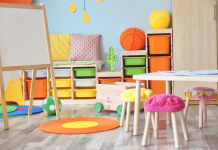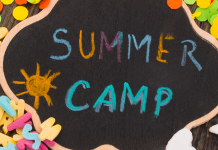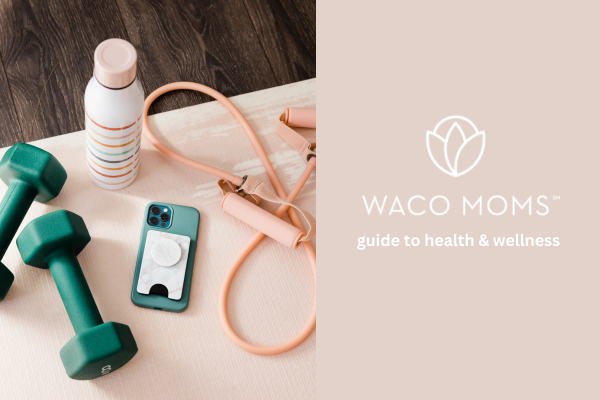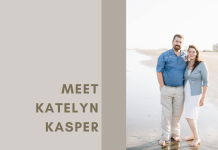Local Mom, Shae Phillips and her husband, Jon, are devoted parents to four precious children; Elsie, 7.5, Thiess, 6, Redding, 3.5, and Andersen, 9 months. They have been blessed to grow their family both biologically and through adoption. Andersen, their youngest, immediately captures attention and hearts everywhere they go. He wears his crop of black hair in a spunky baby mohawk that matches his adorable and equally unique personality. The Phillips Family adopted Andersen last summer, knowing he had a diagnosis of Down syndrome.
Shae has written poignantly and specifically as the Mom with a child who has Down syndrome; the beauty, the learning, the love. If you’ve ever thought, how can I love someone well who has Down syndrome, or their families, how can I learn, support, or understand … read on. Her words are an incredible gift of love and understanding, of hope and encouragement, and we are grateful for her generosity in sharing them with us!
- Shae, how did your, Jon, and your family get matched with Andersen?
The story to Andersen joining our family is a story that would fill its own blog post. The short of it is, we joined the National Down Syndrome Adoption Network (NDSAN) with hopes to adopt a child with Down syndrome. Three months later, we met a birth mom who had chosen us to parent her son. We got to meet Andersen two days after he was born and have had the joy of being his parents every day since.
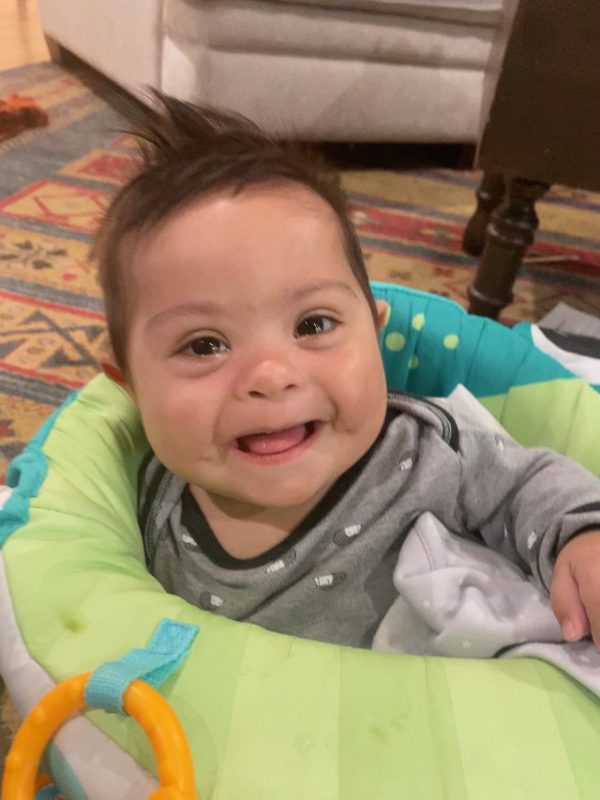
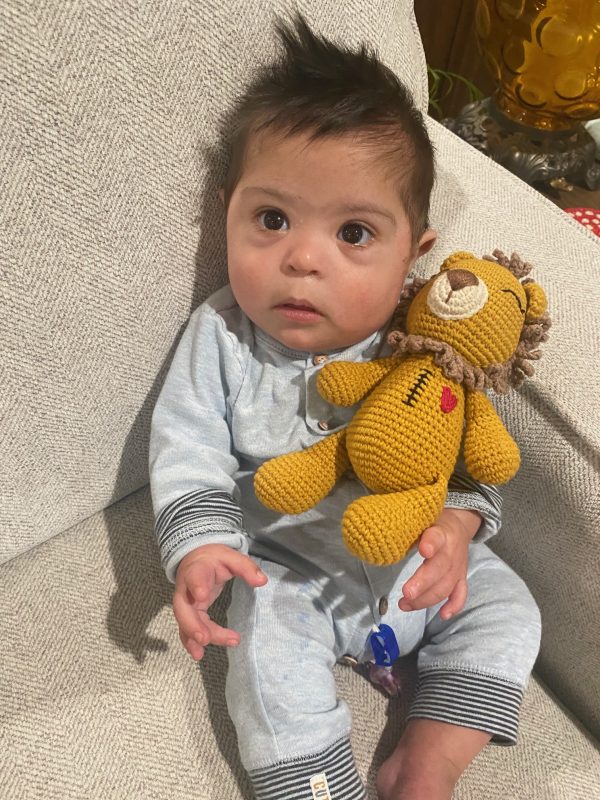
- How can someone close, or not, to an individual/family best love and support a family, parent, or individual that may have Down syndrome? How can they support the community at large?
While we are still new to the world of Down syndrome, it’s meant so much to me to see the people we love most embrace and celebrate Andersen with us. Our friends’ and families’ willingness to love, help, pray for and encourage us has been a deep blessing. I always appreciate when someone connects me to another mom or tells me about an organization they know. Asking questions, showing interest in the child, and being willing to learn new skills goes a long way!
Social media is full of positive examples and lots of ideas on how to be an advocate/get involved in the Down syndrome community. Organizations like the NDSAN, Rising Kites, Room to Bloom, GLADS Network, Jack’s Basket, Ruby’s Rainbow and Trium Tribe are all working to make space for people with Down syndrome. Whether donating your time or finances to organizations that support people with Down syndrome, you’ll make an impact.
As moms, there is a huge opportunity for us to teach our kids to value every life. Due to the frequency of trisomy 21, there is a large possibility your family knows someone who has Down syndrome. Could you make room in your library bag to pick up a few books to read together about kids with differing abilities? Can you ask for a park play date to help set an example of the importance of inclusive friendship? What are positive tag lines you can use to talk with your children about people you may come across in the community? Could you attend the Heart of Texas Down Syndrome Network’s walk to show your family’s support of this population? Could your business hire an adult with Down syndrome to help them improve their independence? - What is Down syndrome and what are a few things you learned about Down syndrome before/after adopting Anderson?
Before I had the privilege of being Andersen’s mom, I knew the clinical side of a Down syndrome diagnosis. A chromosomal condition (also known as trisomy 21) that is caused by an extra chromosome which results in common physical characteristics as well as possible other conditions. According to the Center for Disease Control and Prevention, Down syndrome is the most common chromosomal condition in the U.S.; approximately 6,000 babies are born each year with Down syndrome.
Since adopting Andersen and being a part of this new community, I have realized the emotional side of a Down syndrome diagnosis. Andersen has had many serious medical complications involving long hospitalizations and suffering. I don’t grieve Andersen having Down syndrome; I never will. He is exactly who God made him to be. But as his mom, I do wish his extra chromosome didn’t come with added physical suffering.
I have learned to slow down and enjoy everyday routines. Instead of rushing toward the next breakthrough or jumping ahead, Andersen takes his time to get stronger and develop his skills. As his parents, we take joy in celebrating the seemingly small, but hard earned milestones. Smiling, rolling, surpassing 11 pounds, safely swallowing a spoonful of pureed carrots, putting weight through his feet – we take nothing for granted!
I have learned to administer g-button feeds, bring a mattress topper to make hospital stays more comfortable, manage a schedule for follow up appointments for 19 specialists, how to spend hours on the phone with pharmacies and insurance providers, and a whole new vocabulary of medical information. I can convert kilograms to pounds without googling it and have learned which veins of Andersen’s keep IVs for more than a few hours. I have learned how to hope hard and advocate with courage for Andersen.
I have learned how welcoming and genuine the Down syndrome community is. Parents that fight hard for their kids to have a place in our world also fight hard to remind each other that they aren’t alone. Random strangers and old friends have come along side us to share their wisdom and their joy of raising a child who is extra special. The club of moms with children with an extra chromosome is just as special as the babies. - Sometimes people are unaware of the best language to use when talking about disabilities. People feel afraid of saying the wrong thing, so they don’t say anything at all. What advice could you give to someone so they can care for others well with their words?
Generally, I know most people mean well and aren’t intentionally using language that might be perceived as offensive. My advice is to strive to use person first language, for example say, “Andersen is a baby with Down syndrome” instead of “a Down’s baby.” I appreciate when people ask questions instead of making assumptions. If you aren’t sure how to say something, just ask! For as much room as there is for education about these things, there is an equal amount of grace as we all learn together. - Is there a humbling/heart warming moment that you’d like to share?
I was secretly worried that having a baby with Down syndrome would negatively impact our older 3 kids. Andersen has spent about 30% of his life in the hospital. When he is home, my days are full of taking him to appointments and meeting his needs.
Silly me for entertaining those worries! Our big 3 adore Andersen in the most precious way. They have a gentle patience and selfless joy for him that can’t be taught. Seeing them celebrate him and meet him at his level to play is beautiful. Each of them has developed an individual relationship with him and have willingly adapted their lives to include his special needs. I can’t wait to see all we continue to learn from him as he grows. All of us have learned about kindness, joy, long suffering and peace from the tiniest member of our family. Early on, we told our kids that there would be more of Andersen to love because of his extra chromosome. Little did we know just how deep and far that extra love would run!
My experience as the mom of Andersen has taught me that Down syndrome comes with an extra chromosome for the child as well as “extra” for the mom – extra time spent, extra appointments, extra sleepless nights, extra learned skills, extra googling, extra relationships, extra love and extra joy. Oh the joy! Extra extra joy!
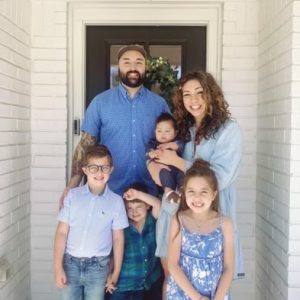 Shae, you, Jon, and your family are precious and we have loved getting to know you, learn from you, and be encouraged at how much love can do for each person through your words! God writes us each a beautiful story; thank you sharing yours and Andersen’s.
Shae, you, Jon, and your family are precious and we have loved getting to know you, learn from you, and be encouraged at how much love can do for each person through your words! God writes us each a beautiful story; thank you sharing yours and Andersen’s.



